In the past couple of weeks, I’ve talked to several people who announced to me that they’ve decided to stop using supplements. They say that the evidence seems to have become overwhelming, with study after study pointing out that supplements often don’t contain what they say they do, are often highly contaminated, produce no benefits, and may actually increase your risk of cancer. In truth, that hasn’t happened at all. It only seems that way. Most of these studies have been downright wrong or have taken their data from previous studies that were wrong themselves. Even worse, what appears to be multiple studies is, in fact, a handful of incorrect studies that have been recycled and presented multiple times as new and damning.
The reason people are so concerned is that in the last few months alone we’ve seen a number of headlines all challenging the usefulness and safety of supplements. We’ve had three separate attacks on Dr. Oz and the supplements he promotes. We’ve seen the New York Attorney General challenge the credibility of some the world’s largest distributors of supplements–claiming that they neither contain the ingredients listed on their labels as well as containing a large number of contaminants. And most recently, we had the Byers study, which prompted a series of headlines including:
- CBS News: “Dietary supplements linked to increased cancer risk.”1 Jessica Firger. “Dietary supplements linked to increased risk of cancer.” CBS News. April 20, 2015. (Accessed 7 May 2015.) http://www.cbsnews.com/news/dietary-supplements-linked-to-increased-cancer-risk/
- Fox News: “Dr. Manny: Are your dietary supplements killing you?”2 Dr. Manny Alvarez. “DR. MANNY: Are your dietary supplements killing you?” Fox News. April 22, 2015. (Accessed 7 May 2015.) http://www.foxnews.com/health/2015/04/22/dr-manny-are-your-dietary-supplements-killing/
- Huffington Post: “Dietary Supplements May Actually Increase Cancer Risk, Especially in High Doses.”3 Agata Blaszczak Boxe. “Dietary Supplements May Actually Increase Cancer Risk, Especially In High Doses.” HUFFPOST. April 22, 2015. (Accessed 7 May 2015.) http://www.huffingtonpost.com/2015/04/22/dietary-supplements-cancer_n_7118226.html
- Business Insider: “Evidence is growing that vitamins and supplements could be dangerous to public health.”4 Nathan Collins. “Evidence is growing that vitamins and supplements could be dangerous to public health.” Business Insider. May 1, 2015. (Accessed 7 May 2015.) http://www.businessinsider.com/vitamins-and-supplements-fda-healthy-2015-5
At first glance, it’s all pretty frightening. Fortunately, at second glance, it’s a whole lot less than it seems.
As for the attacks on Dr. Oz, we dealt with that in our last newsletter. Two of the attacks were funded by Monsanto in an attempt to discredit his position in favor of GMO labeling. And the third attack attempted to hold him to a standard far beyond that which the medical community itself adheres to, as well as dramatically distorting the meaning of the data they had gathered when presenting it to the public. Look, there are many things to complain about concerning Dr. Oz’s TV show, and I have dealt with a number of them before. The big one, of course, is that he presents everything as a “magic bullet.” In truth, magic bullets are a medical concept that we have been conditioned to expect from everything we use. Have a cold: take a pill. Have an infection: get a shot. Not happy with the way you look: see a plastic surgeon. As we will explore later, real health solutions almost always require a far more holistic approach.
 As for the New York Attorney General’s attack on supplements, we discussed that in the newsletter immediately preceding the one on Dr. Oz. The AG’s claim that GNC, Target, Walmart, and Walgreens were selling supplements that either didn’t contain the ingredients listed on the label or contained unlisted contaminants turned out to be false. It was based on a test, DNA Barcoding, that simply doesn’t work for processed herbs or herbal extracts. There’s simply no DNA left in biochemical extracts. (Think vodka. There’s simply no wheat DNA to be found in the distilled essence you pour from your Grey Goose bottle. Any DNA was left behind in the used mash you tossed out.) The fact that once GNC signed a letter of surrender, the NYAG immediately released the impounded product for sale, tells you everything you need to know. If it truly had been mislabeled or contained dangerous contaminants, it never would have been released. I was actually surprised by the number of people who wrote in to defend the AG, saying he was good man who meant well. I could grant him that possibility for the original mistake. Hey, anybody can make a mistake–even one that cost GNC’s, Walmart’s, Walgreen’s and Target’s shareholders hundreds of millions of dollars in lost stock value. I’m willing to give him the benefit of the doubt on his initial mistake. But quietly slipping the products in question back into circulation while announcing a victory for the consumer so that people were left with the mistaken impression that the products truly had been mislabeled, when they were not, is unconscionable. Man it up and admit you made a mistake. Instead, he left vast numbers of people, including the media, with the false impression that the majority of supplements on the market are falsely labeled and potentially dangerous, merely to cover his behind and protect his political future. The net result is that he has falsely added fuel to the fire that is currently engulfing the world of supplements. For that, he loses all claims to goodness.
As for the New York Attorney General’s attack on supplements, we discussed that in the newsletter immediately preceding the one on Dr. Oz. The AG’s claim that GNC, Target, Walmart, and Walgreens were selling supplements that either didn’t contain the ingredients listed on the label or contained unlisted contaminants turned out to be false. It was based on a test, DNA Barcoding, that simply doesn’t work for processed herbs or herbal extracts. There’s simply no DNA left in biochemical extracts. (Think vodka. There’s simply no wheat DNA to be found in the distilled essence you pour from your Grey Goose bottle. Any DNA was left behind in the used mash you tossed out.) The fact that once GNC signed a letter of surrender, the NYAG immediately released the impounded product for sale, tells you everything you need to know. If it truly had been mislabeled or contained dangerous contaminants, it never would have been released. I was actually surprised by the number of people who wrote in to defend the AG, saying he was good man who meant well. I could grant him that possibility for the original mistake. Hey, anybody can make a mistake–even one that cost GNC’s, Walmart’s, Walgreen’s and Target’s shareholders hundreds of millions of dollars in lost stock value. I’m willing to give him the benefit of the doubt on his initial mistake. But quietly slipping the products in question back into circulation while announcing a victory for the consumer so that people were left with the mistaken impression that the products truly had been mislabeled, when they were not, is unconscionable. Man it up and admit you made a mistake. Instead, he left vast numbers of people, including the media, with the false impression that the majority of supplements on the market are falsely labeled and potentially dangerous, merely to cover his behind and protect his political future. The net result is that he has falsely added fuel to the fire that is currently engulfing the world of supplements. For that, he loses all claims to goodness.
Which brings us to the study of the day: the Byers Study.
The Byers Study
Dr. Tim Byers is the Director for Cancer Prevention and Control at the University of Colorado Cancer Center. He conducted a meta-analysis of 12 trials that spanned 20 years and involved more than 300,000 people and presented his research with great fanfare at the annual meeting of the American Association for Cancer Research, in Philadelphia. His findings that a number of supplements actually made a person much more likely to develop certain types of cancer was seized upon by the press and produced the headlines that we saw above.
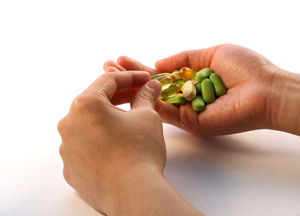 If we are to take Byers at his word, the study itself began with what appears to be the best of intentions. Noting that previous studies had shown that people who eat more fruits and vegetables have a lower risk of cancer, he and his colleagues wondered if taking supplements that contained “the same” vitamins and minerals as fruits and vegetables offered similar protection. So far so good–until you realize that there was no such intention. The presentation at the American Association of Cancer Research is not new, unbiased information, but largely a restatement of a study published three years ago in the Journal of the National Cancer Institute with which Byers was involved.5 María Elena Martínez, Elizabeth T. Jacobs, John A. Baron, James R. Marshall, and Tim Byers. “Dietary Supplements and Cancer Prevention: Balancing Potential Benefits Against Proven Harms.” J Natl Cancer Inst. 2012 May 16; 104(10): 732–739. http://www.ncbi.nlm.nih.gov/pmc/articles/PMC3352833/ In other words, there is nothing new here–just a restatement of a previous study, but by presenting it anew, it has all the appearance of doubling the case against supplements. But that wouldn’t be a problem if the results were true. Let’s continue.
If we are to take Byers at his word, the study itself began with what appears to be the best of intentions. Noting that previous studies had shown that people who eat more fruits and vegetables have a lower risk of cancer, he and his colleagues wondered if taking supplements that contained “the same” vitamins and minerals as fruits and vegetables offered similar protection. So far so good–until you realize that there was no such intention. The presentation at the American Association of Cancer Research is not new, unbiased information, but largely a restatement of a study published three years ago in the Journal of the National Cancer Institute with which Byers was involved.5 María Elena Martínez, Elizabeth T. Jacobs, John A. Baron, James R. Marshall, and Tim Byers. “Dietary Supplements and Cancer Prevention: Balancing Potential Benefits Against Proven Harms.” J Natl Cancer Inst. 2012 May 16; 104(10): 732–739. http://www.ncbi.nlm.nih.gov/pmc/articles/PMC3352833/ In other words, there is nothing new here–just a restatement of a previous study, but by presenting it anew, it has all the appearance of doubling the case against supplements. But that wouldn’t be a problem if the results were true. Let’s continue.
In his presentation, he stated that supplements did not offer the same protection as fruits and vegetables, and, in fact, appeared to actually increase your risk of cancer–with the risk increasing in direct proportion to the amount of supplements you took.
Specifically, his team found that:
- People who took high dose beta carotene supplements had an increased risk of lung cancer.
- Men who took vitamin E had an elevated risk of prostate cancer.
- High levels of folic acid supplementation were associated with an increased risk of colon cancer.
- Selenium supplements were associated with skin cancer.
As Byers told CBS News, “There’s enough evidence along these lines that we should really consider better regulation of these nutritional supplements. I think it’s time to step back and say there’s probably a safety issue.”6 Jessica Firger
He then stated that it’s unclear why supplements could have this adverse effect, but he and other researchers hope to learn more about the association.
And here’s where it gets interesting, because, in fact, we actually have a very good idea why the supplements Byers looked at produced such negative results. In fact, I’ve specifically addressed the flaws in many of those studies over the years. Let’s briefly take a look at the studies that led Byers to his negative conclusions.
Beta Carotene and Lung Cancer
Byers and his associates cited two randomized control trials in which β-carotene was tested in high-risk populations of heavy smokers and asbestos-exposed individuals. In the first study, individuals who were randomly assigned to receive β-carotene in the Beta-Carotene and Retinol Efficacy Trial (CARET) trial had a 39% increase in lung cancer incidence compared with those in the placebo group.7 Omenn GS, Goodman GE, Thornquist MD, et al. “Effects of a combination of beta carotene and vitamin A on lung cancer and cardiovascular disease.” N Engl J Med. 1996;334(18):1150–1155. http://www.nejm.org/doi/full/10.1056/NEJM199605023341802 And the ATBC (Alpha-Tocopherol Beta Carotene) trial found a 16% increase in risk of lung cancer associated with β-carotene.8 “The effect of vitamin E and beta carotene on the incidence of lung cancer and other cancers in male smokers. The Alpha-Tocopherol, Beta Carotene Cancer Prevention Study Group.” I. 1994;330(15):1029–1035. http://www.nejm.org/doi/full/10.1056/NEJM199404143301501 Two separate studies came to similar damning conclusions! What could possibly be the problem? Well, as it turns out, both studies used synthetic β-carotene produced by pharmaceutical giant Hoffmann–LaRoche.
Does that matter?
As I’ve explained many, many times now, synthetic beta-carotene is made by extracting benzene rings from acetylene gas and then attaching the benzene rings together to form 100% all-trans-beta-carotene. There is no natural food source in the world that contains 100% all-trans-beta-carotene. Natural beta-carotene, on the other hand, is made of two molecules–all-trans-beta-carotene and 9-cis-beta-carotene. In sources such as Dunaliella salina,9 http://en.wikipedia.org/wiki/Dunaliella_salina the trans and cis forms of beta carotene are split approximately 50/50.
At one time, studies suggested that synthetic beta carotene actually was absorbed better and worked better than natural forms of beta carotene.10 John W. Erdman Jr., Angela J. Thatcher, Nicolle E. Hofmann, et al. “All-trans ß-Carotene Is Absorbed Preferentially to 9-cis ß-carotene, but the Latter Accumulates in the Tissues of Domestic Ferrets (Mustela putorius puro). J. Nutr. November 1, 1998 vol. 128 no. 11 2009-2013 But subsequent studies in both animals and humans have demonstrated far more conclusively that natural beta carotene provides benefits that the synthetic form cannot match.11 A Ben-Amotz and Y Levy. “Bioavailability of a natural isomer mixture compared with synthetic all- trans beta-carotene in human serum.” Am J Clin Nutr May 1996 vol. 63 no. 5 729-734. http://www.ajcn.org/content/63/5/729.full.pdf+html And more to the point, studies have shown that pre-cancerous changes in people reverted to normal tissue with natural beta-carotene supplements, but not with synthetic supplements. And, in fact, synthetic beta carotene likely increases the risk of cancer.
The bottom line is that natural and synthetic beta carotene are not the same thing. Synthetic beta carotene is not the same beta carotene as found in fruits and vegetables. Results seen with synthetic beta carotene are not applicable to results seen with natural beta carotene. Dr. Byers said it was unclear why the supplements they looked at produced different results than food. Really??!!
Vitamin E and Prostate Cancer
 Here, Byers and his team relied on the infamous SELECT study. As I have explained many times now, they used synthetic dl-alpha tocopherol in the SELECT study. Does that matter?
Here, Byers and his team relied on the infamous SELECT study. As I have explained many times now, they used synthetic dl-alpha tocopherol in the SELECT study. Does that matter?
Yes, natural and synthetic vitamin E are hugely, hugely different! True natural E (100% d-alpha-tocopherol) may be as much as 500% more effective than the synthetic dl-alpha-tocopherol. And if you actually use a full-complex E that incorporates not only all natural d-alpha tocopherol but also contains all four tocopherols and all four tocotrienols, then the difference is probably tenfold. Even worse, there are indications the synthetic form of alpha tocopherol is likely toxic. Is it any wonder, then, that synthetic vitamin E did not perform the same as full complex natural E as found in actual foods–and in quality supplements not made by Hoffmann–LaRoche?
It is crucial that you understand the difference between natural and synthetic supplements. If you click on no other outside link in this newsletter, click here.
Folic Acid and Colon Cancer
In their 2011 study, Byers and his associates acknowledged the difference between the natural and synthetic forms of folic acid, stating, “Although the terms “folate” and “folic acid” are sometimes used synonymously, the latter refers to the synthetic oxidized form that is commonly used in fortification and supplements, whereas naturally occurring folates are reduced molecules that exist in nature in several different forms.” Unfortunately, the studies on folate and cancer that Dr. Byers relied on are far less scrupulous in their observance of the difference–freely interchanging the wording at will. For example, a 2007 study published in Molecular Nutrition & Food Research concluded that “folate deficiency” has an inhibitory effect whereas “folate supplementation” has a promoting effect on the progression of established colorectal neoplasms. It sounds like they’re talking about natural folate. It is only when you dig deeper into the study that you learn that they are actually talking about synthetic “folic acid supplementation.”12 Kim YI. “Folate and colorectal cancer: an evidence-based critical review.” Mol Nutr Food Res. 2007 Mar;51(3):267-92. http://www.ncbi.nlm.nih.gov/pubmed/17295418 That said, the results on synthetic folic acid supplementation and colorectal cancer are ambiguous at best, with most studies showing no harm or benefit, although there certainly are a small number of studies that indicate in may increase your risk.13 Baggott, J.E., Oster, R.A., Tamura, T. “Meta-analysis of cancer risk in folic acid supplementation trials.” Cancer Epidemiol. 2012;36:78–81. http://www.ncbi.nlm.nih.gov/pubmed/22018948
Selenium and Skin Cancer
This claim points out a different issue. The Byers study cites a 2002 RCT (randomized controlled trial) that found that selenium supplementation statistically significantly increased the risk of squamous cell skin cancer by 25% and total non-melanoma skin cancer by 17%…in persons who had already had skin cancer.14 Duffield-Lillico AJ, Reid ME, Turnbull BW, et al. “Baseline characteristics and the effect of selenium supplementation on cancer incidence in a randomized clinical trial: a summary report of the Nutritional Prevention of Cancer Trial.” Cancer Epidemiol Biomarkers Prev. 2002;11(7):630–639. http://cebp.aacrjournals.org/content/11/7/630.long The fact that it was a study on cancer recurrence is very important. As I have discussed in other newsletters, the role of antioxidants changes dramatically when it comes to cancer prevention VS fighting cancers that already exist. Whereas free radicals may play a significant role in triggering cellular mutations that cause you to get cancer in the first place, once you actually get it, those same free radicals may play a major role in getting rid of it. Taking “certain” antioxidants at that point may actually work against you. As we have discussed in previous newsletters, what you do with antioxidants to lower your chances of getting cancer is very different from what you do if you actually have cancer. In other words, although testing for the role of selenium in preventing the recurrence of skin cancer is important and useful, it doesn’t necessarily tell you what its effect is on those who have never had skin cancer.
As it says in Ecclesiastes 3:1, “There is a time for everything.” This concept is not alien to the medical community. Chemotherapy drugs are given to people “after” they get cancer in order to kill it, not “before” they get cancer to prevent it. Likewise some antioxidants are more likely to reduce your risk of ever getting cancer, whereas others are more likely to help combat it if you already have it, or prevent its recurrence if it’s been pushed into remission. “To every antioxidant there is a season.”
Byer’s Sums up His Report
In the end, Byers said that rather than relying on supplements, people should eat more fruits and vegetables. Nothing wrong with that. As I’ve said myself, “If you eat a pure, organic, balanced, 70% raw, Mediterranean type diet, exercise regularly, and avoid all exposure to environmental toxins, then you have no need for supplements of any kind. Nor do you need any periodic detoxing.” But who lives such a lifestyle? Who is able to avoid all environmental toxins when so many are in the air we breathe and the water we drink? Who eats foods grown in remineralized soil? Organic doesn’t guarantee it. In the end, for people living in today’s world, supplements are a necessity.
But then, Byers doesn’t say supplements are necessarily bad and should never be taken. Rather he says, “I think when people take supplements they shouldn’t take them at levels higher than what you can get in your diet.” And that sounds great, but what does that mean? What diet are you talking about–the Eskimo diet, the typical American diet, the typical Ethiopian diet, a Japanese diet? And traditionally, many diets make use of herbs and heavy dosing of special foods such as garlic when people are sick. Is that allowable? In any case, when it comes to multivitamins, I actually agree with Dr. Byers. I’m not a proponent of mega dosing–but of using low dose, all natural, food matrix, vitamins and minerals to complement your diet–not replace it. If you need a supplement to provide 100% of your RDI for every vitamin and mineral, you’re eating the wrong diet.
There Is a Game
 Inherent in Byers’ report and study, there is a bit of game playing. In fact, this gaming has been going on for some time and is largely responsible for the distrust people are now developing for supplements. The seeds of the game were established with the founding of the American Medical Association over 100 years ago, but it has come into its own with the expansion of the internet and social media which has allowed trending concepts to spread virally with great rapidity and little cost. The intent of the game is to discredit all aspects of alternative health and, most recently, supplements–or at the very least, co-opt and control them. As we explored in a previousl newsletter, most people are not aware that the AMA has been very consistent in these goals since it was founded in 1847. In fact, its very founding was predicated on combatting homeopathic medicine — or as stated in the AMA’s original charter, when referring to homeopathy: “An enemy who has many strongholds upon the affection of the people; and one who in many places rivals us in their esteem.” But it has never been only about homeopathy. It has always been about crushing anything related to health that is not under the medical establishment’s purview. For example, in 1987, US judge Susan Getzendanner, ruled against the AMA and its long-term attack on chiropractic, stating that the AMA had engaged in “systematic, long-term wrongdoing and the long-term intent to destroy a licensed profession.”15 AP. “U.S. Judge Finds Medical Group Conspired Against Chiropractors.” The New York Times. August 29, 1987. (Accessed 9 May 2015.) http://www.nytimes.com/1987/08/29/us/us-judge-finds-medical-group-conspired-against-chiropractors.html And in 2004, the late AMA trustee, Dr. Ronald M. Davis, testified before Congress that the AMA calls for the “pre-market approval by the FDA of all dietary supplements.” Dr. Davis also stated, “The AMA has been concerned for years about the use and abuse of dietary supplements. Congress must provide the FDA with greater regulatory power over dietary supplements to bring needed oversight to the industry and to protect the health of America’s consumers.”16 “Dietary Supplement Safety.” CSPAN June 8, 2004. (Accessed 4 May 2015.) http://www.c-span.org/video/?182196-1/dietary-supplement-safety
Inherent in Byers’ report and study, there is a bit of game playing. In fact, this gaming has been going on for some time and is largely responsible for the distrust people are now developing for supplements. The seeds of the game were established with the founding of the American Medical Association over 100 years ago, but it has come into its own with the expansion of the internet and social media which has allowed trending concepts to spread virally with great rapidity and little cost. The intent of the game is to discredit all aspects of alternative health and, most recently, supplements–or at the very least, co-opt and control them. As we explored in a previousl newsletter, most people are not aware that the AMA has been very consistent in these goals since it was founded in 1847. In fact, its very founding was predicated on combatting homeopathic medicine — or as stated in the AMA’s original charter, when referring to homeopathy: “An enemy who has many strongholds upon the affection of the people; and one who in many places rivals us in their esteem.” But it has never been only about homeopathy. It has always been about crushing anything related to health that is not under the medical establishment’s purview. For example, in 1987, US judge Susan Getzendanner, ruled against the AMA and its long-term attack on chiropractic, stating that the AMA had engaged in “systematic, long-term wrongdoing and the long-term intent to destroy a licensed profession.”15 AP. “U.S. Judge Finds Medical Group Conspired Against Chiropractors.” The New York Times. August 29, 1987. (Accessed 9 May 2015.) http://www.nytimes.com/1987/08/29/us/us-judge-finds-medical-group-conspired-against-chiropractors.html And in 2004, the late AMA trustee, Dr. Ronald M. Davis, testified before Congress that the AMA calls for the “pre-market approval by the FDA of all dietary supplements.” Dr. Davis also stated, “The AMA has been concerned for years about the use and abuse of dietary supplements. Congress must provide the FDA with greater regulatory power over dietary supplements to bring needed oversight to the industry and to protect the health of America’s consumers.”16 “Dietary Supplement Safety.” CSPAN June 8, 2004. (Accessed 4 May 2015.) http://www.c-span.org/video/?182196-1/dietary-supplement-safety
That is the “why” of the game. But what is the actual game being played today, and who’s winning?
The Rules of the Game
Researchers produce a flawed study. For example, they study synthetic vitamin E, which is 1/500th as effective as full complex natural E, and when it doesn’t perform up to expectation, announce that all vitamin E does not work and may even increase your risk of cancer. Let’s call it the SELECT study.17 Eric A. Klein, Ian M. Thompson, Catherine M. Tangen, et al. “Vitamin E and the Risk of Prostate Cancer: The Selenium and Vitamin E Cancer Prevention Trial (SELECT).” JAMA. 2011;306(14):1549-1556. http://jama.jamanetwork.com/article.aspx?articleid=1104493
This study gets cited by numerous other studies that no longer even mention that synthetic E was used. They simply refer to it as vitamin E. The study becomes gospel and is used as the basis for a number of meta-studies. (Incidentally, the SELECT study has been used as a reference for other studies and been cited almost 300 times.) Meta-studies, of course, don’t do any new analysis, they simply do a statistical reanalysis of the data from previous studies. Again, these meta-studies no longer identify that they are analyzing data from studies that examined synthetic E and announce their results as pertaining to all vitamin E, natural and synthetic.
In effect, we have taken the data from an originally flawed study and run it through a “medical copy machine” and turned it into multiple studies expressing the same flawed conclusion. But who can argue with 300 peer reviewed studies all saying the same thing? The error’s very repetition has given it validity.
But then comes the beautiful part. You’re going to really appreciate this. In one fell swoop, we get to triple the number of negative headlines simply by giving our meta studies on synthetic vitamin E and beta carotene different titles/objectives. How? It’s brilliantly simple! Since many supplements have multiple functions in the body, you get to republish the same supplement data over again, first calling them multivitamin studies and then calling them antioxidant studies (think vitamins A, E, C, folic acid, selenium, and beta carotene). Simply by using a different title, you’ve now tripled the argument thereby convincing the press, political bureaucrats, and ultimately the public that supplements (i.e., supplements, vitamins, and antioxidants) not only don’t prevent cancer, but may actually increase their chances of getting it. Think I’m kidding?
- Synthetic E, C, and beta carotene as multivitamins18 J. Michael Gaziano, Howard D. Sesso, et al. “Multivitamins in the Prevention of Cancer in Men. The Physicians’ Health Study II Randomized Controlled Trial.” http://jama.jamanetwork.com/article.aspx?articleid=1380451
- Synthetic E, C, and beta carotene as antioxidants19 T.H. Chan. “Antioxidants: Beyond the Hype.” Harvard School of Public Health. (Accessed 8 May 2015.) http://www.hsph.harvard.edu/nutritionsource/antioxidants/
Game! Set! Nonsense!
How to Choose Your Supplements
Look, are there good quality supplements and bad quality supplements? Absolutely, just like there are good pharmaceutical drugs and bad pharmaceutical drugs. Are there good supplement companies and bad supplement companies? Of course there are–just like there are good doctors and bad doctors.20 “Doctors Behaving Badly.” Google. (Accessed 8 May 2015.) http://www.google.com/maps/d/viewer?mid=zpT7Sx2Xzhiw.kws4aUFXBMEw&ie=UTF8&hl=en&msa=0&z=3 And just like you choose a doctor, you need to exercise the same discretion in choosing the company that provides your supplements and which of those supplements you buy from them. To help you in the process, I offer the following guidelines.
cGMP
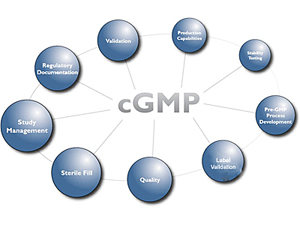 First and foremost, make sure that the company whose name is on the supplements is cGMP compliant. That means that the company is following current Good Manufacturing Practices every step of the way, from ingredient sourcing to manufacturing to storage and distribution. That alone will guarantee that your supplements contain the ingredients that they list on their labels and don’t contain dangerous contaminants at any “notable” level. (Understand that any food you eat that was grown in the ground or that comes from the sea or any supplement that was made from those food sources is going to contain at least minute levels of contaminants such as heavy metals. You just want to be sure that the levels of those contaminants is insignificant.) cGMP requires testing throughout the sourcing and manufacturing process to guarantee ingredient authenticity and purity. Unfortunately, being cGMP compliant is not inexpensive and many companies choose to avoid those costs. Buy from them at your own risk.
First and foremost, make sure that the company whose name is on the supplements is cGMP compliant. That means that the company is following current Good Manufacturing Practices every step of the way, from ingredient sourcing to manufacturing to storage and distribution. That alone will guarantee that your supplements contain the ingredients that they list on their labels and don’t contain dangerous contaminants at any “notable” level. (Understand that any food you eat that was grown in the ground or that comes from the sea or any supplement that was made from those food sources is going to contain at least minute levels of contaminants such as heavy metals. You just want to be sure that the levels of those contaminants is insignificant.) cGMP requires testing throughout the sourcing and manufacturing process to guarantee ingredient authenticity and purity. Unfortunately, being cGMP compliant is not inexpensive and many companies choose to avoid those costs. Buy from them at your own risk.
Understand that cGMP only guarantees authenticity and purity. It does not guarantee potency. It does not guarantee that your supplement will actually do what you hope it will do. More on that in a moment.
When It Comes to Herbs, Quality Costs Money
Everyone wants a good bargain, but in the world of supplements, you often get what you pay for. Good quality ingredients simply cost more. One of my favorite examples is ginseng. High-quality, wild-crafted, or organic ginseng will cost $400–$600 per pound, depending on the season. And yet you can buy low-grade ginseng for as little as $5 a pound and stick it in a formula. Both grades are designated “ginseng” on the label, but which grade do you think contains the highest level of bioactives? Which one do you think actually works? And which grade do you think most companies use? Incidentally, although both low and high grade herbs look identical to DNA Barcode testing since they both contain the same plant DNA. On the other hand, they do not look the same under testing that is regularly used as part of cGMP protocol. Currently available tests can accurately determine the levels of bioactive chemicals in an herb. And in truth, what’s more important: testing for non-existent DNA in a biochemical extract or verifying that there’s sufficient biochemical potency to do the job?
Understand, just because testing can determine herb quality doesn’t mean that all companies, even cGMP compliant companies opt for the highest quality. It costs more, and most companies don’t want to pay for the highest quality. Why? Because they know that most people make their buying decisions based on cost, not quality. It’s up to you, of course, but if you want herbal products to actually work for you, you’re going to have to pay for that quality. It’s the reason that I insisted that Baseline Nutritionals become cGMP compliant AND continually hunt for the highest quality ingredient sources regardless of cost. If you believe that one supplement is the same as another as long as the label is accurate, then you should definitely buy according to price. But if you believe that when it comes to your health, compromise is not an option, then how much are you really saving if you pay less for something that doesn’t work?
When It Comes to Nutraceuticals, You Want Naturally Sourced Not Synthetic
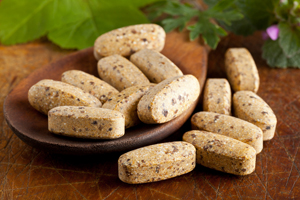 For nutraceuticals, there’s an equivalent to low grade herbs; it’s called synthetics. Many nutraceutical companies love synthetics because they’re cheaper and more stable (i.e., they have a longer shelf life). Researchers love them because they’re more “predictable,” which is why you continually see them used in studies. Unfortunately, as we’ve already discussed, synthetics may be represented by an identical chemical formula, but the structure of the molecule expressed by that formula is worlds apart from its natural counterpart.
For nutraceuticals, there’s an equivalent to low grade herbs; it’s called synthetics. Many nutraceutical companies love synthetics because they’re cheaper and more stable (i.e., they have a longer shelf life). Researchers love them because they’re more “predictable,” which is why you continually see them used in studies. Unfortunately, as we’ve already discussed, synthetics may be represented by an identical chemical formula, but the structure of the molecule expressed by that formula is worlds apart from its natural counterpart.
You need to remember that your body doesn’t actually know how to handle synthetic components, which is why testing may show harmful results such as a higher incidence of cancer. The problem is not in the supplement, but in which version of the supplement you use. Is it really worth saving a few cents per serving by using synthetic nutraceuticals? And why do researchers keep insisting on testing the synthetic version of supplements, yet announcing their study results as though they relate to the natural forms as well.
It’s crucial that you understand the difference between synthetic and naturally sourced nutraceuticals. If you did not do so earlier, click here.
Full Complex VS Isolates
When it comes to nutraceuticals, there’s a step beyond synthetic and natural. It’s the idea that nutrients never exist naturally as isolates. They exist only as part of complexes. A full natural vitamin E complex, for example, contains eight active biochemicals (four tocopherols and four tocotrienols). When you buy most vitamin E supplements, even the natural ones, you’re only getting one of those eight biochemicals: isolated d-alpha tocopherol. Unfortunately, recent studies have shown that both gamma tocopherol21 Jiang Q, Christen S, Shigenaga MK, Ames BN. “gamma-tocopherol, the major form of vitamin E in the US diet, deserves more attention.” Am J Clin Nutr. 2001 Dec;74(6):714-22. http://ajcn.nutrition.org/content/74/6/714.long and gamma tocotrienol22 Abdul Rahman Sazli F, Jubri Z, et al. “Gamma-tocotrienol treatment increased peroxiredoxin-4 expression in HepG2 liver cancer cell line.” BMC Complement Altern Med. 2015 Mar 13;15:64. http://www.ncbi.nlm.nih.gov/pmc/articles/PMC4369828/ have unique, powerful health benefits that you are being denied when you use the d-alpha isolate.
When it comes to beta carotene, you again have a choice. You can get pure synthetic beta carotene, which has been shown to increase the incidence of lung cancer in smokers, or full complex, naturally sourced beta carotene which has actually been shown in studies to be health protective and which contains alpha carotene as well. Recent studies are now proving that alpha carotene is even more potent than beta carotene.23 Hoyoku Nishino. “Cancer prevention by carotenoids.” Mutation Research/Fundamental and Molecular Mechanisms of Mutagenesis. Volume 402, Issues 1–2, 18 June 1998, Pages 159–163. http://www.sciencedirect.com/science/article/pii/S0027510797002935
Full complex C contains the bioflavonoids hesperidin and rutin, as well as calcium, all of which serve to increase the bioavailability of the vitamin C as well as offering their own powerful health benefits.
And on and on.
You get the idea; when choosing your supplements, you want full complex, naturally sourced ingredients in your nutraceuticals where possible, not isolates.
Formulas VS Single Ingredients
Another way in which supplements differ from drugs is that at its most powerful, most effective, and most healing, holistic medicine makes use of formulations as opposed to drug-like magic bullets. You’ve probably had someone recommend that if you’re anxious, you should take kava kava, or if you have a cold, take Echinacea. That’s right out of traditional medicine–turning supplements into drugs. And it’s the least effective way to use supplements.
Well-designed supplement formulas, on the other hand, not only address particular symptoms, they also support the body as a whole. In addition, they make use of the synergistic effect inherent in many ingredients. For example:
- Many of the more powerful herbal formulations incorporate cayenne, not just because of its remarkable healing properties, but because cayenne is a potentiator for many other herbs, helping to energize them, to stimulate them, to “drive” them into the bloodstream. (Bioperene®, a standardized black pepper extract, is now used in many commercial herbal formulas for the same purpose.) Lobelia, on the other hand, is a potentiator for “nerve rebuilding” herbs, both stimulating ones such as Ginkgo biloba and soothing ones such as St. John’s wort.
- Multiple studies have shown that curcumin and green tea strongly reinforce each other.24 Laura S. Angelo and Razelle Kurzrock. “Turmeric and green tea: a recipe for B-Chronic Lymphocytic Leukemia.” Clin Cancer Res. 2009 Feb 15; 15(4): 1123–1125. http://www.ncbi.nlm.nih.gov/pmc/articles/PMC2646173 , 25 Gang Xua, Guijie Renb, Xia Xub, et al. “Combination of curcumin and green tea catechins prevents dimethylhydrazine-induced colon carcinogenesis.” Food and Chemical Toxicology. Volume 48, Issue 1, January 2010, Pages 390–395. http://www.sciencedirect.com/science/article/pii/S0278691509004888 , 26 Asish K. Ghosh, Neil E. Kay, Charla R. Secreto, and Tait D. Shanafelt. “Curcumin Inhibits Prosurvival Pathways in Chronic Lymphocytic Leukemia B Cells and May Overcome Their Stromal Protection in Combination with EGCG.” Clin Cancer Res February 15, 2009 15; 1250. http://clincancerres.aacrjournals.org/content/15/4/1250.full Used together, the whole is greater than the sum of its two parts.
- By itself, alpha lipoic acid (the natural form is R-lipoic acid) is one of the main boosters of glutathione levels in body cells27 Busse E, Zimmer G, Schopohl B, Kornhuber B. “Influence of alpha-lipoic acid on intracellular glutathione in vitro and in vivo.” Arzneimittelforschung. 1992 Jun;42(6):829-31. http://www.ncbi.nlm.nih.gov/pubmed/1418040 and is one of the key co-factors involved both in generating energy in the cell’s mitochondria and in protecting those mitochondria from damage.28 Giorgia Mellia, Michela Taianaa, et al. “Alpha-lipoic acid prevents mitochondrial damage and neurotoxicity in experimental chemotherapy neuropathy.” Experimental Neurology. Volume 214, Issue 2, December 2008, Pages 276–284. http://www.sciencedirect.com/science/article/pii/S0014488608003312 But when used in combination with vitamins E and C, lipoic acid plays a major role in recycling those vitamins so that they can be used over and over again by your body.29 Ozkan Y1, Yilmaz O, Oztürk AI, Ersan Y. “Effects of triple antioxidant combination (vitamin E, vitamin C and alpha-lipoic acid) with insulin on lipid and cholesterol levels and fatty acid composition of brain tissue in experimental diabetic and non-diabetic rats.” Cell Biol Int. 2005 Sep;29(9):754-60. http://www.ncbi.nlm.nih.gov/pubmed/16095929
Unfortunately, only more experienced formulators are aware of these synergies and know the proper proportions to use. Putting together formulations is much more akin to an art than science. A good herbal formulator, for example, can identify hundreds of herbs and determine their quality by taste, smell, and touch. No testing equipment comes close to matching the sensitivity of the great herbalists. I understand that this “artistic” approach to formulation drives conventional doctors crazy, but I consider their disapproval a side benefit.
The key concept here is that well designed formulas are better than magic bullets.
Good Formulators VS Bad Formulators
 Quite simply, there are many so-called supplement formulators who don’t have the slightest idea what they’re doing, but are good marketers and convince people to buy nearly useless formulas. Their errors generally fall into one of two categories.
Quite simply, there are many so-called supplement formulators who don’t have the slightest idea what they’re doing, but are good marketers and convince people to buy nearly useless formulas. Their errors generally fall into one of two categories.
People often send me a formula and say they just purchased it because it looked incredible and they want to know what I think. After all, they tell me, it has everything you need in one formula. Invariably, I’ll suggest they do a little math. For example, the dosage for their miracle pill may be 500 mg and it contains fifty different ingredients. Simple math says that if the ingredients are all present at equal weight, the most you can have of any one is just 10 one-thousandths of a gram. And invariably, the ingredients are not present in equal amounts and are weighted to the first two or three ingredients on the list. That means that the bottom 20–30 ingredients in the formula may be present in amounts as small as one one-thousandth of a gram or less. The ink used to print the ingredient’s name on the label weighs more than the actual ingredient used in the formula. Those of us in the trade call ingredients used at this level “pixie dust” because they have no effect on the body and are present merely to look good on the label.
Another major problem comes from people who have no direct experience with the ingredients they are using and build their formulas from a book. (When medical doctors produce supplement formulas, this is how they usually do it.) They create formulas by opening a reference book and looking up every ingredient they can find that’s recommended for a particular purpose and throwing it into a formula. Many formulas on the market are created in this manner, which leads to some very bizarre combinations. Among my favorites are the intestinal formulas that contain both probiotics and goldenseal. If you look them up on the Internet, you will find that both are listed as being beneficial in promoting intestinal health. However, probiotics achieve their benefit by promoting the growth of beneficial bacteria in the intestinal tract. Goldenseal, on the other hand, is an excellent antibiotic and produces its benefit by killing harmful bacteria in the intestinal tract. Unfortunately, with continued use, goldenseal also kills beneficial bacteria. By ingesting formulas that contain both ingredients for intestinal maintenance, you are both promoting and killing beneficial bacteria at the same time! That’s kind of like using diet root beer and high-fat ice cream when making a root beer float. What’s the point?
Programs VS Formulas
We have been trained by modern medicine to look for the “magic bullet.” If I have the flu, what shot can you give me? If I have high blood pressure, what pill can I take? If I want a strong immune system, what supplement should I take? Unfortunately, good health doesn’t actually work like that. In truth, you’re only as strong as your weakest link. You need to understand that each system in your body impacts the entire body. For example:
- How good can your immune system be (taking all the supplements in the world that you want) if your colon is packed with pounds of old fecal matter. A substantial portion of your immune system then has to combat the effects of self-toxicity. Clean up your intestinal tract, and you free up your immune system.
- Beneficial bacteria manufacture potent immune boosters such as Transfer Factor and Lactoferrin right in your intestinal tract — assuming those beneficial bacteria are actually there. In other words, use a good probiotic, and you substantially boost your immune system by increasing internal production of a number of powerful immune factors.
- Taking systemic/proteolytic enzymes between meals relieves stress on the immune system by helping to eliminate Circulating Immune Complexes from the body.
- Proper diet and nourishment boost your immune system. Each and every immune cell in your body is manufactured from the food you eat. A nutritionally deficient diet means functionally deficient immune cells. Trace minerals and living matrix vitamin supplements enhance the production of your body’s immune cells.
- Immunomodualtors such as L-carnosine and CMO (cetyl-myristoleate) help keep the immune system properly programmed so it doesn’t attack itself.
- Full spectrum antioxidant formulas boost the immune system in multiple ways. Just one example is curcumin. Studies have shown that curcumin can increase white blood cell count by some 50% in just 12 days–not to mention circulating antibodies some 512-fold in the same timeframe.30 . Antony, R. Kuttan, G. Kuttan. “Immunomodulatory Activity of Curcumin.” Immunological Investigations, 1999, Vol 28, Iss 5-6, pp 291-303. http://informahealthcare.com/doi/abs/10.3109/08820139909062263
- Cleaning out your liver with a good liver detox program improves your liver’s ability to produce immune factors and remove bacteria from the blood. Cleaning out the blood with a good blood cleansing formula and balancing your blood’s pH with alkalinizing formulas or high pH water also helps to improve immune function.
- And of course, immune boosting formulas and pathogen destroying formulas are specifically designed to improve immune function and directly destroy invading pathogens.
- The mental exercises and visualizations outlined in Lessons from the Miracle Doctors can double immune function in as little as 24 hours. In addition, herbal immune relaxing formulas can dramatically reduce stress levels in the body, resulting in a dramatic increase in immune function — virtually overnight.
- And finally, one of the primarily benefits of regular exercise, as recommended in the Baseline of Health Program, is an optimized immune system.
The bottom line is that if you want to build your immune system, no magic bullet formula is going to do the trick by itself. You need to think holistically and adopt a complete program like the Baseline of Health Program. The good news is that by making use of a program, you don’t have to take hundreds of supplements–just enough to deal with you body’s major systems.
Like Buying Wine
In the end, the best way to choose your supplements is the same way you choose wine–find a manufacturer you know and trust and stick with them. When buying wine, for example, Lafite Rothschild is always going to be better than screw-top Thunderbird. In the same way that you hunt for a good doctor that you like and trust, find a good supplement company and stick with them. In the end, that’s why I created Baseline Nutritionals–so I knew I’d be able to get the quality I wanted for my own personal use. Since you probably can’t start your own supplement company, find a company that works for you.
 To summarize:
To summarize:
-
- Buy your supplements from companies that are cGMP compliant.
- Don’t buy cheap supplements. Get the best price you can, but buy quality supplements. Don’t go cheap when it comes to your health.
- Choose naturally sourced supplements, not synthetic supplements.
- Look for full-complex ingredients VS isolates for those ingredients that offer them.
- Opt for formulas over magic bullet ingredients.
- Learn as much as you can about who is designing the formulas you use. Idiots produce silly formulas. Experienced formulators produce life changing formulas.
- Think holistically. Don’t think, “I’ve got symptom A. What formula should I take to get rid of it?” Instead, think, “I’ve got symptom A. How can I optimize every system in my body so that my body does what it was designed to do and gets rid of it?”
Conclusion
It’s important to understand that making alternative remedies more uniform and better regulated–turning them into drugs, if you will–has all been done before starting in the second half of the 19th century. The entire pharmaceutical/drug industry is an outgrowth of the herbal industry. In fact, the word “drug” comes from the old Dutch/German word “droog,” which refers to the process used to dry herbs to turn them into medicines. Many, many prescription drugs are still based on the active ingredients found in medicinal plants. Tamiflu is a plant extract from the Chinese star anise. Digitalis is derived from foxglove, aspirin from white willow bark, and Tamoxifen from the Pacific yew to name just a few. And how has that worked out?
In fact, that’s the reason the global wellness industry topped 500 billion dollars in 2013.31 “Market size of the global wellness industry in 2013, by segment (in billion U.S. dollars.” The Statistics Portal. (Accessed 5 May 2015.) http://www.statista.com/statistics/270720/market-size-of-the-wellness-industry-by-segment/ A half trillion dollars represents a lot of unhappiness with mainstream medicine and its pharmaceutical options. As we’ve seen, there are ways currently in place to guarantee you get the supplements you want and need–as long as you choose to follow them. Do we really want more regulation that puts the supplement industry ever more under the control of the medical and pharmaceutical industries–that once again turns supplements into drugs? Do we really want to return to the days when mainstream medicine controlled everything and we had no health options other than surgery and pharmaceutical drugs? Do we really want to return to the days when there were no natural options? To those who say, more regulation only makes sense, I remind them of the old saying: “Be careful what you ask for because you just might get it.”

References
| ↑1 | Jessica Firger. “Dietary supplements linked to increased risk of cancer.” CBS News. April 20, 2015. (Accessed 7 May 2015.) http://www.cbsnews.com/news/dietary-supplements-linked-to-increased-cancer-risk/ |
|---|---|
| ↑2 | Dr. Manny Alvarez. “DR. MANNY: Are your dietary supplements killing you?” Fox News. April 22, 2015. (Accessed 7 May 2015.) http://www.foxnews.com/health/2015/04/22/dr-manny-are-your-dietary-supplements-killing/ |
| ↑3 | Agata Blaszczak Boxe. “Dietary Supplements May Actually Increase Cancer Risk, Especially In High Doses.” HUFFPOST. April 22, 2015. (Accessed 7 May 2015.) http://www.huffingtonpost.com/2015/04/22/dietary-supplements-cancer_n_7118226.html |
| ↑4 | Nathan Collins. “Evidence is growing that vitamins and supplements could be dangerous to public health.” Business Insider. May 1, 2015. (Accessed 7 May 2015.) http://www.businessinsider.com/vitamins-and-supplements-fda-healthy-2015-5 |
| ↑5 | María Elena Martínez, Elizabeth T. Jacobs, John A. Baron, James R. Marshall, and Tim Byers. “Dietary Supplements and Cancer Prevention: Balancing Potential Benefits Against Proven Harms.” J Natl Cancer Inst. 2012 May 16; 104(10): 732–739. http://www.ncbi.nlm.nih.gov/pmc/articles/PMC3352833/ |
| ↑6 | Jessica Firger |
| ↑7 | Omenn GS, Goodman GE, Thornquist MD, et al. “Effects of a combination of beta carotene and vitamin A on lung cancer and cardiovascular disease.” N Engl J Med. 1996;334(18):1150–1155. http://www.nejm.org/doi/full/10.1056/NEJM199605023341802 |
| ↑8 | “The effect of vitamin E and beta carotene on the incidence of lung cancer and other cancers in male smokers. The Alpha-Tocopherol, Beta Carotene Cancer Prevention Study Group.” I. 1994;330(15):1029–1035. http://www.nejm.org/doi/full/10.1056/NEJM199404143301501 |
| ↑9 | http://en.wikipedia.org/wiki/Dunaliella_salina |
| ↑10 | John W. Erdman Jr., Angela J. Thatcher, Nicolle E. Hofmann, et al. “All-trans ß-Carotene Is Absorbed Preferentially to 9-cis ß-carotene, but the Latter Accumulates in the Tissues of Domestic Ferrets (Mustela putorius puro). J. Nutr. November 1, 1998 vol. 128 no. 11 2009-2013 |
| ↑11 | A Ben-Amotz and Y Levy. “Bioavailability of a natural isomer mixture compared with synthetic all- trans beta-carotene in human serum.” Am J Clin Nutr May 1996 vol. 63 no. 5 729-734. http://www.ajcn.org/content/63/5/729.full.pdf+html |
| ↑12 | Kim YI. “Folate and colorectal cancer: an evidence-based critical review.” Mol Nutr Food Res. 2007 Mar;51(3):267-92. http://www.ncbi.nlm.nih.gov/pubmed/17295418 |
| ↑13 | Baggott, J.E., Oster, R.A., Tamura, T. “Meta-analysis of cancer risk in folic acid supplementation trials.” Cancer Epidemiol. 2012;36:78–81. http://www.ncbi.nlm.nih.gov/pubmed/22018948 |
| ↑14 | Duffield-Lillico AJ, Reid ME, Turnbull BW, et al. “Baseline characteristics and the effect of selenium supplementation on cancer incidence in a randomized clinical trial: a summary report of the Nutritional Prevention of Cancer Trial.” Cancer Epidemiol Biomarkers Prev. 2002;11(7):630–639. http://cebp.aacrjournals.org/content/11/7/630.long |
| ↑15 | AP. “U.S. Judge Finds Medical Group Conspired Against Chiropractors.” The New York Times. August 29, 1987. (Accessed 9 May 2015.) http://www.nytimes.com/1987/08/29/us/us-judge-finds-medical-group-conspired-against-chiropractors.html |
| ↑16 | “Dietary Supplement Safety.” CSPAN June 8, 2004. (Accessed 4 May 2015.) http://www.c-span.org/video/?182196-1/dietary-supplement-safety |
| ↑17 | Eric A. Klein, Ian M. Thompson, Catherine M. Tangen, et al. “Vitamin E and the Risk of Prostate Cancer: The Selenium and Vitamin E Cancer Prevention Trial (SELECT).” JAMA. 2011;306(14):1549-1556. http://jama.jamanetwork.com/article.aspx?articleid=1104493 |
| ↑18 | J. Michael Gaziano, Howard D. Sesso, et al. “Multivitamins in the Prevention of Cancer in Men. The Physicians’ Health Study II Randomized Controlled Trial.” http://jama.jamanetwork.com/article.aspx?articleid=1380451 |
| ↑19 | T.H. Chan. “Antioxidants: Beyond the Hype.” Harvard School of Public Health. (Accessed 8 May 2015.) http://www.hsph.harvard.edu/nutritionsource/antioxidants/ |
| ↑20 | “Doctors Behaving Badly.” Google. (Accessed 8 May 2015.) http://www.google.com/maps/d/viewer?mid=zpT7Sx2Xzhiw.kws4aUFXBMEw&ie=UTF8&hl=en&msa=0&z=3 |
| ↑21 | Jiang Q, Christen S, Shigenaga MK, Ames BN. “gamma-tocopherol, the major form of vitamin E in the US diet, deserves more attention.” Am J Clin Nutr. 2001 Dec;74(6):714-22. http://ajcn.nutrition.org/content/74/6/714.long |
| ↑22 | Abdul Rahman Sazli F, Jubri Z, et al. “Gamma-tocotrienol treatment increased peroxiredoxin-4 expression in HepG2 liver cancer cell line.” BMC Complement Altern Med. 2015 Mar 13;15:64. http://www.ncbi.nlm.nih.gov/pmc/articles/PMC4369828/ |
| ↑23 | Hoyoku Nishino. “Cancer prevention by carotenoids.” Mutation Research/Fundamental and Molecular Mechanisms of Mutagenesis. Volume 402, Issues 1–2, 18 June 1998, Pages 159–163. http://www.sciencedirect.com/science/article/pii/S0027510797002935 |
| ↑24 | Laura S. Angelo and Razelle Kurzrock. “Turmeric and green tea: a recipe for B-Chronic Lymphocytic Leukemia.” Clin Cancer Res. 2009 Feb 15; 15(4): 1123–1125. http://www.ncbi.nlm.nih.gov/pmc/articles/PMC2646173 |
| ↑25 | Gang Xua, Guijie Renb, Xia Xub, et al. “Combination of curcumin and green tea catechins prevents dimethylhydrazine-induced colon carcinogenesis.” Food and Chemical Toxicology. Volume 48, Issue 1, January 2010, Pages 390–395. http://www.sciencedirect.com/science/article/pii/S0278691509004888 |
| ↑26 | Asish K. Ghosh, Neil E. Kay, Charla R. Secreto, and Tait D. Shanafelt. “Curcumin Inhibits Prosurvival Pathways in Chronic Lymphocytic Leukemia B Cells and May Overcome Their Stromal Protection in Combination with EGCG.” Clin Cancer Res February 15, 2009 15; 1250. http://clincancerres.aacrjournals.org/content/15/4/1250.full |
| ↑27 | Busse E, Zimmer G, Schopohl B, Kornhuber B. “Influence of alpha-lipoic acid on intracellular glutathione in vitro and in vivo.” Arzneimittelforschung. 1992 Jun;42(6):829-31. http://www.ncbi.nlm.nih.gov/pubmed/1418040 |
| ↑28 | Giorgia Mellia, Michela Taianaa, et al. “Alpha-lipoic acid prevents mitochondrial damage and neurotoxicity in experimental chemotherapy neuropathy.” Experimental Neurology. Volume 214, Issue 2, December 2008, Pages 276–284. http://www.sciencedirect.com/science/article/pii/S0014488608003312 |
| ↑29 | Ozkan Y1, Yilmaz O, Oztürk AI, Ersan Y. “Effects of triple antioxidant combination (vitamin E, vitamin C and alpha-lipoic acid) with insulin on lipid and cholesterol levels and fatty acid composition of brain tissue in experimental diabetic and non-diabetic rats.” Cell Biol Int. 2005 Sep;29(9):754-60. http://www.ncbi.nlm.nih.gov/pubmed/16095929 |
| ↑30 | . Antony, R. Kuttan, G. Kuttan. “Immunomodulatory Activity of Curcumin.” Immunological Investigations, 1999, Vol 28, Iss 5-6, pp 291-303. http://informahealthcare.com/doi/abs/10.3109/08820139909062263 |
| ↑31 | “Market size of the global wellness industry in 2013, by segment (in billion U.S. dollars.” The Statistics Portal. (Accessed 5 May 2015.) http://www.statista.com/statistics/270720/market-size-of-the-wellness-industry-by-segment/ |





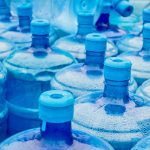


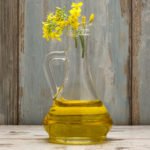



Well, Baron is much more
Well, Baron is much more right than wrong in his article on Buying Supplements. Until wed get to the “Like Buying Wine” section and see that Baron has his own supplement company. (I didn’t know that. Regular readers probably do.) Automatically, everything that Baron writes about supplements has to be filtered through that fact. Is he just some guy trying to bolster (albeit indirectly) his own selling of a product or is he some kind of independent “expert,” qualifications unknown (at least to me), who has the education and experience that allow him to objectively review the research? Unfortunately, we have no way of knowing.
Bummers. it was a pretty good article until that little “disclosure” near the end.
I have an alternative recommendation to Baron’s suggestions on how to buy supplements. Because we don’t know the extent to which Baron’s advice and discussion of research are simply self-serving, I think the best answer on how to buy supplements is to buy them ONLY from non-profit companies. For-profit companies do their thing to make money for themselves and their stockholders. Non-profits do not. I do not know many non-profit supplement sellers, but one of the best and largest is Life Extension Foundation (LEF.org). All “profits”at LEF are channeled into research trying to find ways to extend the human life span. Is LEF perfect? Of course not. When I first started buying their products,many years ago, I ordered several jars of Vitamin D3. About three weeks later, I received another complete order of D3 with this note: Our research has found that the Vitamin D3 we sent you did not contain the full amount of Vitamin D3 that we promised on the bottle. Please accept our apologies for this, and please accept this Vitamin D3, which we can assure you has all the amounts of the vitamin that we promised on the bottle. I have no financial interests in this company.
Dr. Fischer:
Dr. Fischer:
We’d like to apologize in advance for our response. We only get about three or four similar comments a year and normally let them go unanswered, but they are a particular pet peeve for Jon Barron, and he finally said enough is enough and that we should address it. The bottom line is that you are going to take the brunt for all those comments that are disingenuous, naïve, and ill-informed.
Your primary argument is that because Jon is associated with Baseline Nutritionals, anything he says through the nonprofit Baseline of Health Foundation is tainted, and that LEF, since it sells its products through its nonprofit entity is the ideal model and should be taken at face value. This is disingenuous.
First, as a doctor, do you get paid for what you do? If so, then by the same logic, you should not be trusted. We should only trust doctors who work for nonprofit entities—and apparently don’t get paid for their work. Then again, doctors who work for the nonprofit Kaiser Permanente get paid too—large salaries, for that matter—so we probably shouldn’t trust them either. Right?
You refer to the little “disclosure” near the end of the article as though it was an attempt to slip something by you. Not at all. We are very clear about who we are and what our relationship is with Baseline Nutrititionals. For example, in our FAQ section, you will find the following:
“What is the Baseline of Health® Foundation?
The Baseline of Health Foundation is an alternative health information web resource, containing dozens of articles, lectures, Q&A, and a free download of Jon Barron’s remarkable book, ‘Lessons from the Miracle Doctors.’ Although the site emphasizes the health program outline in Jon’s book, it also offers impartial commentary on research, product trends, and current events in alternative health.
What’s the difference between Baseline of Health Foundation and Baseline Nutritionals®?
The Baseline of Health Foundation website is purely an informational health site whereas Baseline Nutritionals sells supplements. Jon is adamant that the Foundation and its website and newsletter not be commercialized — even in regard to his own products. Although the newsletters will occasionally feature articles on formulations Jon has been working on, the Baseline of Health Foundation itself does not sell any supplements. Jon Barron, the founder, has over 40 years experience formulating high-end nutraceuticals for major international health companies, and still formulates and consults for many companies world-wide. He sells his own high-end line of formulas through Baseline Nutritionals.”
It also should be pointed out that the article you objected to does not link to any of Jon’s products. When talking about systemic proteolytic enzymes, for example, it links to a detailed, fully referenced, generic article on proteolytics, not Jon’s pHi-Zymes formula. Amusingly, the number of complaints we receive from readers who read our articles and can’t figure out where to buy products that match Jon’s description outnumbers complaints such as yours by a factor of several hundred to one.
(Incidentally, thanks to your comment, Jon has indicated we may have to rethink how we handle this since it seems to make no one very happy. Most people complain because articles don’t make it clear where to buy formulas, and a small number, such as yourself, complain because they feel that by not directly mentioning the products, we’re trying to slip something over on them. Kind of a damned if you do and damned if you don’t scenario.)
Anyway, contrast this with the LEF model that you admire so much. Every magazine that they mail out is, in reality, a giant advertisement. Every article they write pitches a product, and two pages later they run an ad for the product they just described. You can’t get more blatant than that. (In fact, the IRS found it too blatant. More on that later.) Keep in mind that LEF articles never promote any product that they don’t sell. They are specifically designed to pitch their products. Jon and the Baseline of Health Foundation, on the other hand, frequently write about products and companies that have nothing to do with Jon; and, of course, the Foundation sells no products at all—not even Jon’s formulas. The article above, for example, is primarily focused on multivitamins. Jon does not make a multivitamin formula and does not sell one. And in fact, on our product recommendation page, we point to two different companies that sell multivitamins that Jon likes—and neither one has anything to do with Jon or the Foundation.
You also seem to believe that nonprofit companies are somehow more ethical because they are “nonprofit.” That is naïve. Nonprofit doesn’t mean that people don’t make money; it simply means that the organization functions under a different distribution constraint. Specifically, a nonprofit organization uses its surplus revenues to achieve its purpose or mission, rather than distributing its surplus income to the organization’s directors (or equivalents) as profit or dividends. But within those constraints, they can pay any salaries, no matter how exorbitant, to anyone who works for them. And they can use income to acquire any assets they choose such as real estate. They simply can’t distribute “profits” or “dividends” to their owners. Incidentally, Baseline Nutritionals and Jon Barron use most of their profits to fund the Baseline of Health Foundation. That’s why the information is totally free to you. You don’t have to pay a yearly membership fee, as you do with LEF, to receive information.
And finally, we mentioned ill-informed. It appears you are unaware that LEF lost its tax exempt status two years ago for failing to provide proper documentation and for functioning more like a profit based company than a nonprofit. In other words, according to the IRS, they’re really a profit making business. Incidentally, all of that said, Jon personally likes LEF too and recommends many of their nutraceutical products in addition to his own. Amusingly, you single out LEF’s vitamin D. Check out our product recommendation page; you will see that Jon recommends LEF’s vitamin D as well. You might want to explore our site more thoroughly. There are little gems like that scattered throughout our several thousand free pages of valuable health information.
Again, we’d like to apologize for unloading on you in our response. You just happened to leave your comment in the wrong place and at the wrong time and became the focal point for those people who leave disingenuous, naïve, and ill-informed accusations.
Thank You Jon for the clarity
Thank You Jon for the clarity and objective analysis in defense of a legitimate industry and healthy society!
I’ve been enjoying your
I’ve been enjoying your articles for quite some time – and I’m interested in one of your programs. But as you say – quality costs!
So – would you consider adding PayPal, including just might appreciate this option as well — and might even turn from just readers, into buyers. Thanks.
The Base Line is, like The
The Base Line is, like The Bible says, one day the Truth will be shouted from the roof tops. The medical model will be secondary and alternative and complimentary treatments will come into their own as the primary answers for the healing of the sick. Pharmaceuticals will no longer be allowed to have a vested interest in insuring that people continue to be ill in order to maintain their phenomenal profits. Truth seekers and proclaimers tend mostly to be in a minority.
Indeed a person who claimed to be ‘The Truth’ was, at his death, in a minority of One. Over the years His followers have steadily been increasing. He once used the soil and some of
His own saliva to heal a blind man. I wonder what that is telling us?
Usually I just ignore the
Usually I just ignore the “mean behind the screen” comments people make, but I’m happy to see that the docs who are actually trying to provide information and help the general public are finally fighting back. Too often people leave hateful, disingenuous comments that are not refuted because the docs take the high road and don’t dignify these comments with a response. Just like with the attack on Dr. Oz, there always seems to be an ulterior motive behind the smear campaigns and comments. So bravo, Mr. Barron, for setting the record straight with Dr. Fischer. Keep up the excellent work! I’ve subscribed to your newsletter for several years now and will continue to do so.